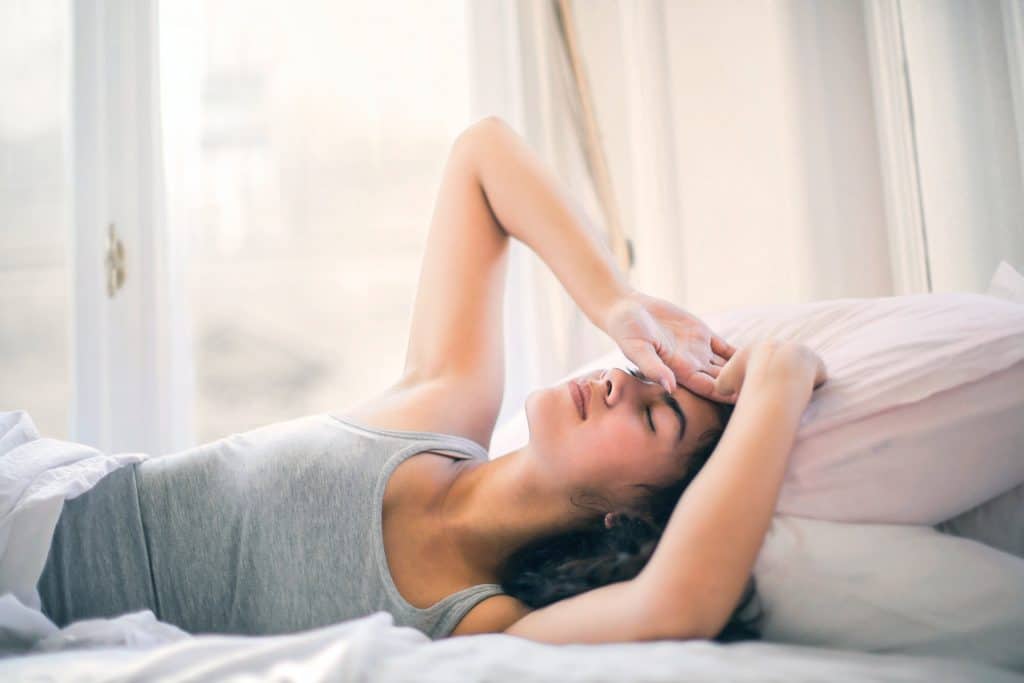Sleep Problems: Causes and Treatment Methods

Sleep problems are a major cause of unproductivity and unhappy life. They can affect relationships, mental health, performance in school or at work, and overall health and well-being. An estimated 10% to 30% of people worldwide suffer from insomnia — a common disorder characterized by difficulty falling asleep or staying asleep long enough to be well-rested.
Many people suffer from insomnia or some other type of sleep disorder without even knowing it. If you think that you should feel and perform better than you currently do, getting better sleep might be all you need to achieve that. You will discover everything you need to know about the disorders in this guide: from their causes, types, and symptoms to the best treatment option available.
What Are Sleep Disorders?
Sleep disorders are conditions that prevent you from getting quality sleep and ultimately affect productivity. They are so common, but many people do not that they have them. It is a common belief that inadequate sleep (fewer than recommended hours of sleep) only causes daytime sleepiness and fatigue, but that is untrue.
Poor sleep can impact the brain in children and adults alike. It could cause memory problems and overall cognitive decline in adults and learning disabilities in children. Also, it is known to cause slower reaction times, which can, in turn, lead to work-related and automobile accidents. But that is not all; people who lack quality night rest often experience mood swings, personality changes, and difficulty socializing with people [1][2].
But what is considered quality sleep?
Well, one is said to have a good nap if they fall asleep with ease, do not wake during the night (due to pain, breathing problems, teeth grinding, night terrors, or any form of discomfort), and wake up in the morning feeling well-rested and refreshed [3].
If you’re wondering what the recommended sleep duration is, it is worth noting that it is not fixed. It may vary from one individual to another based on age. The recommended nap time for teenagers (14-17), young adults (18-25), and old adults (26-64) is 8 to 10 hours, 7 to 9 hours, and 7 to 8 hours, respectively [4].
What Causes Sleep Disorders?
Several factors cause sleep disorders, but in most cases, they are typically due to a bad lifestyle habit or an underlying health condition. Regardless of the cause, the effects are usually similar — a disruption of the body’s normal biological clock and excessive daytime somnolence.
The common causes of the disorders can be split into several categories, including [5][6]:
- mental health (such as depression, trauma, anxiety, and stress);
- medical conditions (such as cardiovascular diseases, respiratory problems, etc.);
- medications (such as alpha-blockers, ARBs, Beta-blockers, etc.);
- poor lifestyle habits (lack of exercise, poor diet, excessive alcohol consumption, etc.);
- odd or graveyard shifts;
- genetics.
It is worth noting that aging is another common causative factor of sleep disorders. Although the why and how are not known, over 50% of adults over the age of 65 have been found to have one form of sleep disorder.
Symptoms and Diagnosis of Sleep Problems
The symptoms of sleep problems may vary depending on the type an individual may be experiencing.
For example, symptoms of sleep apnea, a common type of disorder, include loud snoring, early-morning headaches, excessive daytime sleepiness, and a feeling of tiredness throughout the day, even after resting for the recommended hours.
Symptoms of insomnia, another common disorder, include irritability, racing thoughts during bedtime, excessive daytime sleepiness, memory problems, general feeling of tiredness, and waking up at night without being able to go back to sleep.
While various sleep disorders have symptoms that are unique to them, some symptoms cut across all or most sleep issues. They include [7][8]:
- excessive daytime sleepiness;
- vivid dreamlike experiences when dozing or shortly before you fall asleep;
- difficulty falling asleep (taking over 30 minutes);
- legs or arms jerking during sleep (as observed by a partner);
- disturbances that cause you to wake several times each night and make it difficult to fall back asleep;
- gasping, snorting, making choking sounds, or snoring loudly.
Experiencing one or more of the aforelisted symptoms may be an indication that you have a sleep disorder. You may then consult a doctor to help diagnose the exact disorder you may be suffering from so you would get appropriate treatment.
Common Types of Sleep Disorders
There are over 80 different types of sleep problems, but only about 7 of them are common. They are enumerated in this sleep disorder list:
Insomnia
Insomnia is one of the most common disorders, affecting about 10% of adults globally. It is characterized by difficulty falling asleep or staying asleep long enough without interruptions for the body to be well-rested. It is typically caused by anxiety, stress, digestive problems, jet lag, etc., and it may be chronic, transient, or intermittent. While transient insomnia usually happens for a few hours each night, and intermittent insomnia occurs periodically, chronic insomnia typically happens frequently for over 1 month and can become life-threatening if left untreated.
Sleep Apnea
Sleep apnea is also a common disorder. It is characterized by several pauses in breathing per hour during night rest. Sometimes the pauses can range anywhere from 5 to 10 seconds or even longer. This condition is serious because pauses in breathing can lead to a drop in body-oxygen levels, which can be detrimental to the brain and overall body health. Usually, the body wakes you up so you can start breathing again whenever it senses the drop in oxygen levels. This causes you to wake up several times at night and ultimately leaves you feeling tired as though you did not rest at all.
There are two types of sleep apnea: central sleep apnea and obstructive sleep apnea (OSA). The former occurs when there is a fault in the connection between the brain and the muscles that regulate breathing. On the other hand, OSA is characterized by an obstruction of the airways. It happens when muscles in the back of the throat relax too much, ultimately causing the narrowing of the airways and a resulting restriction of airflow.
Parasomnias
Parasomnias is a disorder characterized by abnormal sleep behaviors such as sleepwalking, sleep talking, bedwetting, groaning, nightmares, jaw clenching, or teeth grinding. It is often triggered by physiological events that take place during certain sleep stages. Parasomnias can be dangerous since the individuals experiencing them have no clue about what they are doing.
Circadian Rhythm Disorders
The body has an internal clock (circadian rhythm) that naturally follows the dark-light cycle (day and night). It makes you feel sleepy at night and awake & alert during the day. Circadian rhythm disorder is a condition where the internal body clock or circadian rhythm goes out of sync with the environment (day and night). It can lead to trouble sleeping at night or staying awake during the day, aging, jet lag, changes in mood, and gastrointestinal issues.
Restless Legs Syndrome
As the name implies, restless legs syndrome (RLS) is a condition characterized by a pressing need to move the legs. It is often caused by an uncomfortable sensation in the legs that appears to only go after walking around or shaking the legs. It is associated with daytime somnolence, attention deficit hyperactivity disorder (ADHD), etc. People who have it find it difficult to fall asleep, and stay asleep when they eventually do.
Narcolepsy
Narcolepsy is a disorder characterized by a loss of control of sleep and wakefulness. People who suffer from it find themselves suddenly falling asleep repeatedly during the day, without any warming. In some cases, patients may experience atonia — a condition where they are unable to move right after waking up. Narcolepsy is associated with a neurological disorder. It could affect productivity and even cause accidents if left untreated.
The Most Researched Treatments for Sleep Problems
There are several available treatments for sleep problems. The chosen treatment may vary from patient to patient based on the type of disorder looking to be treated. The most common options available for treating or managing most sleep problems include:
Lifestyle Changes
Sometimes, certain tweaks to lifestyle are all it takes to treat a sleep problem. Here are some lifestyle changes that you can do to improve your quality of night rest [9]:
- reduce caffeine intake or avoid it shortly (at least 6 hours) before bedtime;
- eat smaller food portions or low-carb meals before bedtime;
- drink less water a couple of hours before bedtime;
- reduce alcohol consumption;
- quit smoking;
- turn off electronic gadgets, such as smartphones, computers, TV, etc., shortly before bedtime.
Creating a regular routine can help improve sleep quality tremendously. Aim to go to bed and wake up at the same time every day, even on the weekend.
Medical Treatment
The available medical treatments for treating sleep problems include but are not limited to [10]:
- melatonin supplements;
- dietary supplements;
- medications for the underlying health condition;
- dental guard (to stop teeth grinding);
- surgery;
- breathing aid (often used to treat sleep apnea).
Wakefulness-promoting medications, such as Provigil (modafinil) and Nuvigil (armodafinil), are popular medications commonly used to treat narcolepsy, OSA, and shift work sleep disorder (SWSD). They are safe, well-tolerated, and have a high success rate; thus, most people who pop the pills tend to find them effective.
However, they cost quite a lot of money, with a month’s supply (30 tabs) going for about $1,000 on some platforms. Fortunately, generic versions such as ModaXL and Modalert, among others, are available, and they cost about 10X less while providing the same benefits. ModaXL vs. Modalert: they eliminate excessive daytime somnolence and other symptoms associated with the sleep problems they’re used to treat, but ModaXL has a stronger effect and a longer duration of action. People often go with the one that fits the nature of their job or the condition they plan to treat.
Sometimes, a combination of one or more medical treatments may be used to achieve better results. Your doctor will suggest the best treatment option for your specific sleep disorder.
Sleep Hygiene
Sleep hygiene is generally considered as the routines, environmental changes, and behaviors exhibited in other to improve sleep quality. Many sleep problems are caused by sleeping in an unconducive environment, at irregular times every day, or by using smartphones or other gadgets in bed at night. You can greatly improve sleep quality by sleeping in a comfortable bed with little to no noise, setting a consistent sleeping schedule, and keeping away gadgets before bedtime.
Regular Physical Activity
Engaging in physical activity during the day can make it easier to fall asleep fast at night and stay asleep without waking up till morning. If it often takes you over 30 minutes to fall asleep occasionally or every night, you can change that by doing a light exercise before you climb the bed. Physical activities increase the demand for night rest and ultimately improve its quality.
In Closing
Sleep issues affect your ability to get quality rest and function properly during the day. If left untreated, they can result in unproductivity, relationship problems, and a general feeling of sadness, among other things. They can even give rise to health concerns or worsen existing ones, such as anxiety and depression.
We have listed the symptoms associated with many sleep problems. Do well to seek urgent medical attention if you notice any of them. Your doctor will recommend one or more of the available treatment options to help you get better night rest again.
References
- Sleep Disorders – Symptoms and causes. Written by Mayo Clinic Staff. Retrieved: December 15, 2022. Mayoclinic.org.
- Children with sleep apnea have higher risk of behavioral, adaptive and learning problems. By Lynn Celmer. Retrieved: December 15, 2022. Aasm.org.
- What is “normal” sleep? Retrieved: December 15, 2022. Ncbi.nlm.nih.gov.
- National Sleep Foundation’s sleep time duration recommendations: methodology and results summary. By Max Hirshkowitz, PhD, Kaitlyn Whiton, MHS, et al. Retrieved: December 15, 2022. Sleephealthjournal.org.
- Common Sleep Disorders: Symptoms, Causes & Treatment. Retrieved: December 15, 2022. My.clevelandclinic.org.
- Medical Causes of Sleep Problems. Retrieved: December 15, 2022. Helpguide.org.
- Common Symptoms of Sleep Disorders. Retrieved: December 15, 2022. Upmc.com.
- Sleep Disorders. Retrieved: December 15, 2022. Medlineplus.gov.
- How lifestyle changes can address sleep disorders. By DTE Staff. Retrieved: December 15, 2022. Downtoearth.org.in.
- What Are the Best Ways to Treat Sleep Disorders? Retrieved: December 15, 2022. Mypvhc.com.
- ModaXL vs. Modalert: Which Modafinil Drug to Choose? Written By Dr. Shabiullah Syyed. MBBS, MD. Medically reviewed by Dr. Varinder Kumar. Retrieved: December 15, 2022. Modafinil.org.






